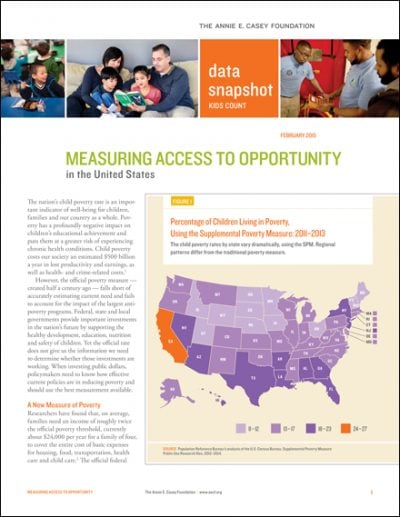Outdated Tools
The official poverty measure was created half a century ago and fails to accurately estimate current need.

This KIDS COUNT data snapshot illustrates how outdated methods measuring poverty in the United States are giving an inaccurate picture of how families are really faring and what public programs are actually working. The brief introduces the more accurate Supplemental Poverty Measure (SPM) and shows how government programs affect state poverty rates. Recommendations on targeting families in need give policymakers input on implementing efficient and cost-effective public programs.
Regional patterns in child poverty differ from the traditional poverty measure.
We hope you'll find value in this report. We’d love to get a little information from you, which we'll use to notify you about relevant new resources.